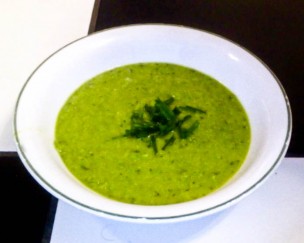In the cases of bank accounts and the hearts of significant others, the concept of “frozen” often gets a bad reputation. This is similarly true with food: the phrase “frozen dinners,” for example, puts forth an image of soggy fries and plastic-y vegetables.
Nevertheless, your freezer—or the shared dorm freezer—can make your life a whole lot easier if you use it properly. There are obvious reasons for this, of course: it means you don’t have to eat that whole pint of ice cream at once (though you probably will anyway, let’s be real). Other reasons include storing leftovers, preparing food in advance, and using frozen produce.
Though it seems simple enough, storing leftovers can be tricky. Freezing gone awry can leave you with freezer burn or food poisoning. The former poses no harm to your health, and can simply be cut away, but it’s unappetizing and degrades the quality of the food. It’s easy to avoid by using airtight, freezer-safe storage containers or bags, maintaining a constant temperature below zero degrees, and letting hot food cool in the refrigerator before placing it in the freezer.
In the interest of safety, you should always keep your freezer temperature below 0 degrees and generally not keep food in the freezer for longer than two months. Freezing does not kill most bacteria, but rather makes them dormant, so defrosting technique is vital to keeping food safe. There are three proper methods of doing this. The first is to defrost in the refrigerator. This is the slowest option, but once the food is defrosted, it does not need to be cooked immediately, which grants some flexibility.
The other two methods are defrosting the food by submerging its container in cold water, or by using the microwave. These are both quick options, but once the food is defrosted it must be cooked immediately. Contrary to popular belief, one should never defrost by using hot water or by simply leaving the food out of the freezer, because it leaves the food at a bacteria-breeding temperature for too long.
I have found, unfortunately, that some foods should never be frozen. Many dairy products will separate in an unappetizing manner. Eggs will often crack, which poses a safety risk. Cake frosting will become soggy. Similarly, fruits and vegetables with high water content, like lettuce and grapes, will often form ice crystals and become limp when defrosted.
Your freezer is also useful for preparing meals in advance and cutting down on future cooking time. Dishes like soup and sauces can be cooked fully and then frozen. Dishes that require baking—such as lasagna and casserole—should not be fully cooked before freezing, because the defrosting process will over-cook them. I have found that what works best is cooking these dishes three-quarters of the time the recipe directions call for, then after freezing, baking until hot at a temperature 50 degrees cooler than the directions originally called for.
Finally, your freezer is great for storing pre-packaged frozen vegetables and fruits. Frozen produce is not something that should ever be frowned upon. Of course, it is not as rich in nutrients as local, in-season produce, but it is generally picked, packaged, and frozen at its peak of freshness, which is something that cannot be said for produce that must be shipped long distances. It is also much less expensive and has a lighter environmental impact than fresh produce that is not local and in-season.
Whew, so that’s the end of my dissertation on freezing. The fun part comes now—testing it out. As the season for cold food is coming to a close, this week I want to share a recipe for a chilled pea and leek soup.
Not only does this recipe call for frozen peas, which are healthy and delectable (frozen or thawed), but the end result holds up very well to freezing. Place any leftovers in an airtight container, stick it in the freezer, and eat the soup hot or cold at a future date. This dish is a fantastic appetizer and snack, and, most importantly, you get to tell people you’re eating “pea and leek soup.” Do I have a future in marketing, or what?
Chilled Pea and Leek Soup
(Adapted from foodnetwork.com)
Ingredients
1 1/2 tbsp. unsalted butter
2 chopped leeks, using just the white and light green parts
1 1/2 cups chopped yellow onion
4 cups low-sodium vegetable stock
20 oz. frozen green peas
2/3 cup chopped mint leaves, loosely packed
2 tsp. salt
1 tbsp. black pepper
1/2 cup sour cream
2 cups chives, chopped
Directions
1. Melt butter in a large, deep saucepan. Add the chopped leeks and onions, and cook over medium heat until the onion is translucent.
2. Pour in the vegetable stock, and bring the soup to boil over high heat.
3. When the soup is boiling, add the peas and cook for three minutes until the peas are tender.
4. Remove the pan from the heat. Add the mint, salt, and pepper.
5. Purée the soup evenly with an immersion blender, or in small batches with a blender. (If puréeing in the blender, let the soup cool for a few minutes before you begin.)
6. Cover the soup and let it chill in the refrigerator. This will take approximately three hours.
7. To serve, top each bowl with a dab of sour cream and sprinkle of chives.
-
Pierre
